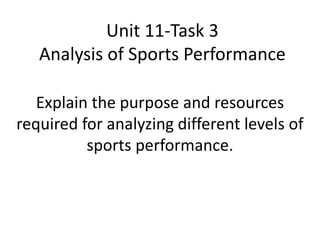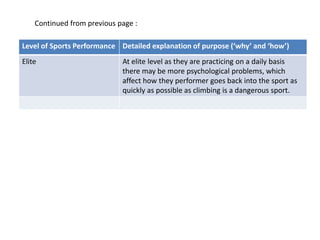The document discusses analyzing sports performance at different levels, including participation and elite levels. It provides details on the purpose and approach for various aspects of analysis including talent identification, monitoring fitness levels, identifying strengths and weaknesses, performance assessment, injury recovery, health assessment, squad selection, and goal setting. The document emphasizes that the specific tools, resources, and level of analysis required increases substantially from the participation to elite levels of performance.


















